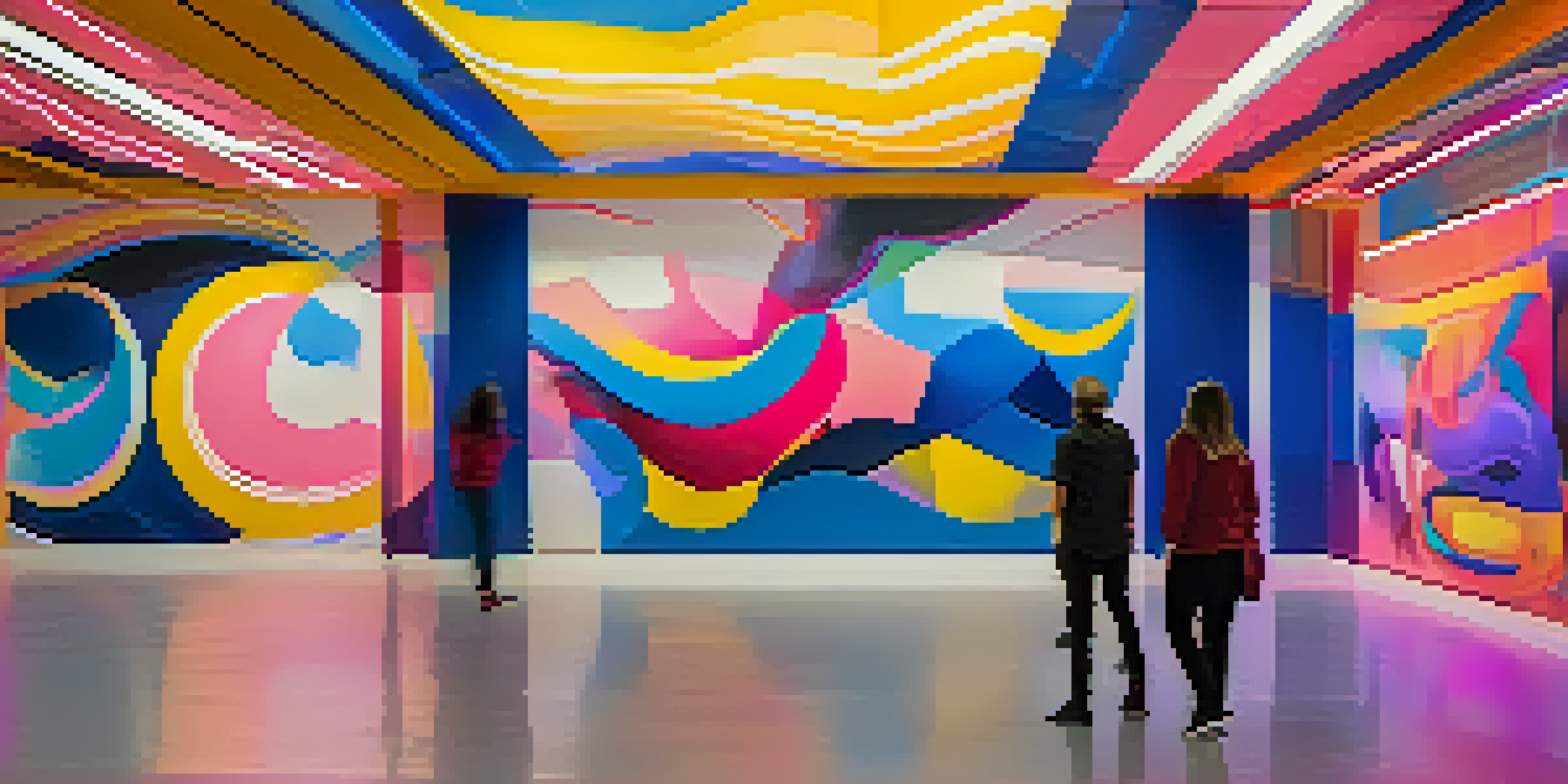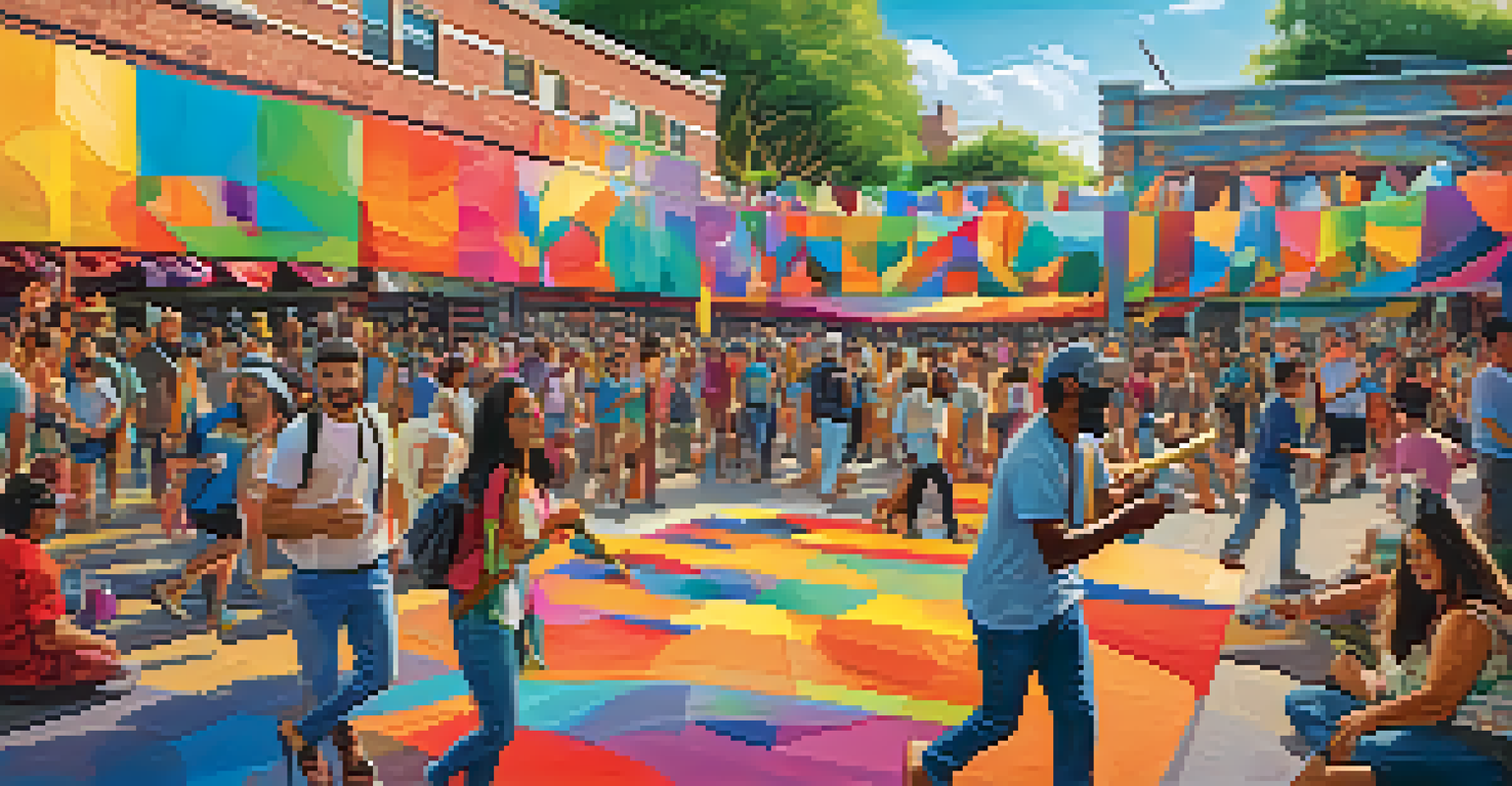Digital Art and Interactive Installations: Engaging the Viewer

What is Digital Art and Interactive Installations?
Digital art encompasses a wide range of creative works created using digital technology. This includes everything from digital paintings to video art and interactive installations. The beauty of digital art lies in its versatility; it can exist in both physical and virtual spaces, inviting viewers to engage in unique ways.
Digital technology has made art more accessible and interactive, allowing for a richer experience for both artists and audiences.
Interactive installations take this concept a step further by allowing the audience to become active participants in the artwork. This could mean manipulating the artwork using touch, motion, or even sound. When viewers interact with these installations, they often experience a deeper connection to the art, transforming the traditional passive viewing experience.
For example, think of a digital mural that changes colors and shapes based on the viewers' movements. This kind of interaction not only mesmerizes but also creates a dialogue between the artwork and the audience, making each visit unique.
The Role of Technology in Digital Art
Technology is the backbone of digital art, enabling artists to explore new mediums and techniques. Software like Adobe Creative Suite allows for intricate designs and animations, while hardware such as tablets and VR headsets provide innovative ways to create and experience art. These tools open up endless possibilities for artistic expression.

Moreover, advancements in technology, such as artificial intelligence and augmented reality, have begun to shape the future of digital art. Artists can now collaborate with AI to generate unique pieces or use AR to layer digital elements over the physical world. This fusion not only enhances the art but also challenges our perceptions of reality.
Digital Art Redefines Engagement
Interactive installations allow audiences to actively participate, transforming the traditional art experience into a shared journey.
An example is the use of AR in exhibits where viewers can point their smartphones at a painting to see it come to life, providing an immersive experience that traditional art forms can’t offer. Such technology not only captivates but also invites viewers to see art from new perspectives.
Engaging Audiences through Interactivity
Interactivity is key to engaging audiences in the realm of digital art. Unlike traditional art, where viewers passively observe, interactive installations encourage participation, making the audience a vital part of the artwork. This element of engagement can foster a sense of ownership and connection to the art piece.
Art is not a thing; it is a way. It is a process of discovering and creating, especially in the digital age.
For instance, installations that respond to audience movements or sounds create a dynamic environment where the art evolves in real-time. This not only captivates viewers but also invites them to reflect on their role in the art-making process. The experience becomes a shared journey between the artist and the audience.
In essence, interactive art breaks down barriers, blurring the lines between creator and observer. It allows for spontaneous creativity, where each interaction can lead to different outcomes, making art a collective experience.
The Impact of Digital Art on Traditional Art Forms
Digital art is not just a new trend; it's reshaping how we perceive traditional art forms. Many artists are now blending digital techniques with classic methods, creating hybrid artworks that challenge conventional boundaries. This evolution prompts discussions about what constitutes art in the modern age.
Additionally, digital platforms enable artists to reach global audiences, breaking geographical barriers. Social media and online galleries have transformed how art is showcased and appreciated, allowing for a diverse array of voices and styles to be shared with the world.
Technology Shapes Artistic Futures
Advancements in AI, AR, and VR are revolutionizing how digital art is created and experienced, pushing the boundaries of artistic expression.
Consider the rise of NFTs (non-fungible tokens), which have revolutionized the way digital art is bought and sold. This new market has sparked debates about ownership and value in the digital realm, pushing both artists and collectors to rethink their approaches.
Creating Community Through Digital Installations
Digital art and interactive installations often serve as communal spaces, bringing people together to experience art collectively. Events and exhibitions encourage collaboration and dialogue, fostering a sense of community among viewers. This social aspect can elevate the experience, as people share their thoughts and interpretations.
For instance, interactive art festivals often invite participation from both local artists and the community, creating a collaborative environment. Attendees might contribute to a mural or help design an installation, making the art truly reflective of the community's spirit.
Such initiatives highlight the importance of inclusivity in art, where everyone feels welcome to express themselves. This sense of belonging can enhance appreciation for the arts, inspiring future generations to engage creatively.
Challenges Facing Digital Artists Today
While digital art offers exciting opportunities, it also presents unique challenges. One major issue is the saturation of the digital art market, where countless artists strive for visibility. Standing out in a crowded space requires not only talent but also strategic marketing and networking skills.
Furthermore, concerns over copyright and ownership in the digital realm can complicate an artist's journey. With the ease of sharing online, protecting one's work becomes increasingly difficult, leading to potential misappropriation of ideas and designs.
Community Through Collaborative Art
Digital installations foster a sense of community by inviting collaboration and dialogue among viewers, enriching the overall artistic experience.
Lastly, as technology continues to evolve, artists must adapt quickly to stay relevant. This constant change can be overwhelming but also serves as a catalyst for innovation, pushing artists to explore new techniques and concepts.
The Future of Digital Art and Interactive Installations
The future of digital art and interactive installations looks bright, with technological advancements paving the way for even more engaging experiences. Emerging technologies like AI, VR, and blockchain will likely play significant roles in how art is created, shared, and experienced. This promises to open up new dimensions for artistic expression.
As audiences become more accustomed to interactive experiences, artists will continue to innovate and find ways to captivate their viewers. The integration of real-time data and personalized experiences could lead to art that resonates on a deeper level, inviting individuals to connect with the work intimately.

Ultimately, the evolution of digital art will challenge both artists and audiences to redefine their understanding of creativity. As we look forward, the blend of technology and art will undoubtedly transform the landscape, making it an exciting time to be part of this dynamic field.